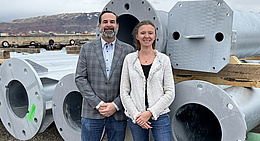The countless comments and posts on the information platform set up by the Tyrolean Richard Resl, geographer and head of the UNIGIS program for Latin America at the University of Salzburg, clearly show that, until a few years ago, the city fathers and many residents of Quito were convinced that the project was utopian. But Resl refused to be discouraged and continued to insist on the need to find an alternative solution to the continuously increasing volumes of traffic on the roads of the Ecuadorian capital and its growing dormitory communities because, like so many other South American cities, Quito was at risk of being paralyzed by traffic.
The project
As a lecturer at Universidad San Francisco de Quito, he told his students and colleagues that the immediate objective must be to reduce the number of cars on the roads into the city by at least 20,000 per day in order to solve the problem of congestion and give Quito’s residents their mobility back. For him, the solution was to build a cable car system with a line length of 7.4 km, linking central Quito with the densely populated areas located some 400 meters lower down in the valley to the east of the city in the catchment area for the new airport.
In support of his idea, Richard Resl searched the technical literature for reports on similar projects, the potential of modern ropeway systems and their applicability to a city of three million souls in the middle of the Andes.
His original sketches became real plans, which were discussed in countless participatory urban planning meetings involving the municipality’s transport experts and planners, the police, citizens’ initiative groups for traffic problems, civil society groups, public transport operators and local people from more than fifty districts of Quito and the Tumbaco Valley and finally fed into a GIS data base. The spatial analyses generated from the plans showed the advantages of a ropeway over other modes of transport. With a preliminary study submitted in 2012, Resl was able to convince the local government that the project was technically feasible and, at a capital outlay of about USD 200 million, would deliver a return on investment at the current standard public transport ticket price of USD 0.75. The social, economic and ecological benefits available on the basis of his calculations were seen not only in a quality mode of public transport with a daily transport capacity of 150,000 passengers offering regular transit times with no queuing but also in a 33 % reduction in the number of cars on the roads and savings with regard to the bus fleet, including savings in subsidies for fuel and bus fares totaling more than USD 3 million per year, plus a reduction in carbon emissions by an average of 120,000 t per year for the first twenty years of system operation.
For 2015, Resl and his team calculated that this section of the Metroferico, as he called the ropeway, would be used by one third of the daily motorist total and two thirds of bus passengers, which would give a ridage of 75,000 persons per day in the first year of operation. The ropeway system would obviously be attractive for passengers in all social classes, forms of employment and age groups: spending an average of just twenty minutes to travel to and from the city center instead of an hour and avoiding all the hassles, the hunt for a parking space, the risks of driving and also the higher costs.
In the initial operating phase, the system would carry 2,500 passengers per hour and direction. With Quito spreading rapidly outwards along the Tumbaco Valley and passenger totals expected to increase accordingly, the ropeway is designed for operation at twice the original capacity by 2030.
Feasibility study
The project became a serious proposition when Resl persuaded the mayor of Quito to commission a technical feasibility study from a company with a proven international track record in the field of ropeway planning, namely the Innsbruck consulting engineers ILF. From a comparison of several possible lines of the ropeway from central Quito to the area around the new airport, the Metroferico line was selected as the most suitable in terms of the indicators used for return on investment and potential for reducing traffic congestion. The result was three technically feasible lines for a modern tricable ropeway with five stations between Parque Carolina in Quito and El Nacional in Tumbaco at a cost of about USD 200 million. The study provided a basis for the technical and commercial feasibility of the project.
Inclusion in the transport plan
In the meantime, the new city council headed by Mayor Rodas has added the Metroferico and three other, shorter and smaller ropeways serving outer suburbs at higher locations to Quito’s transport plan and also given them top priority. The official project was presented in the national media on January 28 under the new name Quitocables. Construction is due to start in the course of 2015.
For his part, Richard Resl has agreed to make the results of several years of work, in which he received very helpful support and data from Austrian companies and experts, available to the authorities free of charge in the spirit of voluntary citizens’ initiative work. It is his hope that the combination of local know-how and international state-of-the-art ropeway technology will lead to implementation of the project, with financial support for the project also being sought at the European level.
Richard Resl explains that there is keen demand for and general acceptance of this mode of transport on the part of the inhabitants of Latin America’s big and growing cities. It must be said, however, that 90 % of the line chosen for his ropeway in Quito leads over land that has not been developed for topographical reasons, which has minimized the risk of social resistance to the project. Similarly, the three additional suburban ropeways will serve disadvantaged areas and thus have a social function that also largely avoids that kind of problem.
For Richard Resl, the ropeway is more than a public transport system; it is an example of successful citizen participation in the creation and planning of meaningful and economically viable urban development projects.
Contact Richard Resl:
metroferico@gmail.com
http://iniciativametroferico.wordpress.com
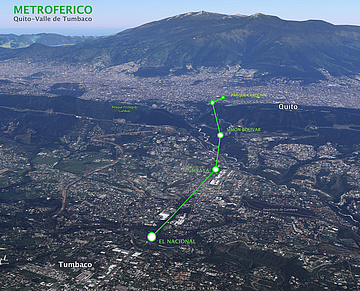
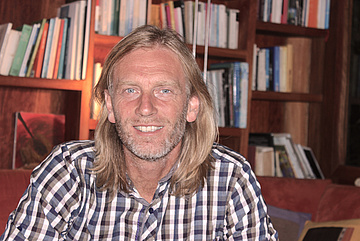

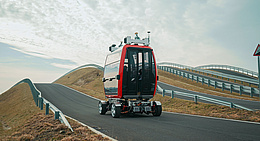
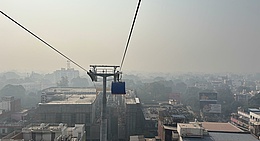
![[Translate to English:] (c) Doppelmayr](/fileadmin/_processed_/b/3/csm_85-ATW_Stechelberg-Muerren_Lauterbrunnen_CHE_001_6442c0520d.jpg)


